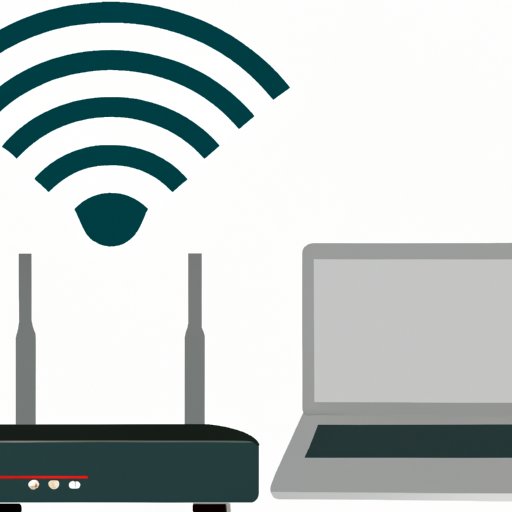Introduction
Having reliable internet access is essential for many people who work from home or need to stay connected. Wi-Fi has become the most common way to connect to the internet, as it allows you to access the web from anywhere in your home or office without having to plug into a wall outlet. Unfortunately, there are times when your laptop won’t connect to Wi-Fi, which can be incredibly frustrating. In this article, we’ll explore why your laptop won’t connect to Wi-Fi, and how you can troubleshoot and fix the issue.
Troubleshooting Guide: How to Resolve Common Issues When Your Laptop Won’t Connect to Wi-Fi
Before diving into more complex solutions, try these simple steps to resolve the issue. Start by checking the router settings. Make sure the router is turned on and that all cables are securely connected. Try resetting all devices, including the router and your laptop. Then check the Wi-Fi adapter to make sure it’s working properly. If none of these steps resolves the issue, it’s time to move on to more advanced troubleshooting.
Why Your Laptop Won’t Connect to Wi-Fi and How You Can Fix It
There are several potential causes for why your laptop won’t connect to Wi-Fi. One common culprit is driver issues. Outdated drivers can cause your laptop to have difficulty connecting to the network. Another potential cause is outdated hardware. If your laptop is more than a few years old, its hardware may not be compatible with the latest Wi-Fi standards. Interference from other networks can also be an issue, especially if you’re using a shared network. Finally, security settings can prevent your laptop from connecting to the network.
Diagnosing and Repairing Wi-Fi Connection Problems on Your Laptop
Once you’ve identified the potential cause of the problem, it’s time to start troubleshooting. The first step is to use the network troubleshooter. This will help you identify any issues with the network itself. If the issue persists, try updating the drivers for your Wi-Fi adapter. You should also check all physical connections to make sure everything is firmly plugged in. Finally, you should adjust the power management settings to ensure that your laptop isn’t going into sleep mode while trying to connect to the network.
What to Do if Your Laptop Won’t Connect to Wi-Fi
If none of the above steps resolves the issue, there are still a few options available. First, check your router settings to make sure they are correct. You should also check for any interference from other networks. Try resetting your Wi-Fi adapter and then see if you can connect to a different Wi-Fi network. If you’re still having trouble, it may be time to contact your internet service provider for further assistance.
How to Troubleshoot Wi-Fi Connection Problems with Your Laptop
Troubleshooting Wi-Fi connection problems can be a difficult process. The first step is to identify the problem. Once you know what the issue is, restart your laptop to see if that solves the problem. Then check the connection settings to make sure they are correct. You should also reset the router if necessary. Finally, try connecting to a different Wi-Fi network to see if the issue is isolated to your current network.
Conclusion
Laptop not connecting to Wi-Fi can be a real pain, but thankfully there are some easy steps you can take to troubleshoot and fix the issue. Start by checking router settings, resetting all devices, and checking your Wi-Fi adapter. If the issue persists, look into driver issues, outdated hardware, interference from other networks, and security settings. Finally, use the network troubleshooter, update drivers, check physical connections, and change power management settings. With a bit of patience and some troubleshooting, you can get your laptop back online in no time.


